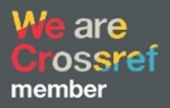COUNTING SPERMA AKTIF MENGGUNAKAN METODE OTSU THRESHOLD DAN LOCAL ADAPTIVE THRESHOLD
DOI:
https://doi.org/10.51804/tesj.v1i1.68.47-54Keywords:
local adaptive threshold, morphologi, motiliti, otsu, segmentasi, spermaAbstract
Analisis sperma adalah pemeriksaan awal yang dilakukan pada kasus infertilitas pria, salah satunya adalah menentukan motiliti normal dan abnormal, yang dilakukan oleh ahli. Analisa sperma ini juga dapat dilakukan secara otomatis dengan berbantuan komputer, yaitu dengan cara mengambil per-frame video sperma kemudian dilakukan proses segmentasi. Pada proses segmentasi terdapat beberapa kendala antara lain data video yang diambil mempunyai intensitas yang berbeda, sehingga diperlukan beberapa metode segmentasi. Penelitian ini adalah membandingkan proses Otsu Threshold dan proses Local Adaptive Threshold (LAT), dengan proses preprosessing yang menggunakan segmentasi Otsu dan Local Adaptive, sehingga dari beberapa data frame video sperma yang disegmentasi akan diketahui segmentasi yang harus digunakan. Dari hasil penelitian didapatkan bahwa intensitas cahaya pada frame sperma yang dianalisis merata, dapat digunakan Otsu Threshold dan jika gambar sperma yang dianalisis intensitasnya tidak merata akan lebih bangus menggunakan Local Adaptive Threshold, dengan demikian untuk melakukan ekstraksi fitur lebih bagus, namun dari beberapa frame (bingkai) sperma yang diujicoba secara acak didapatkan akurasi yang lebih menggunakan proses otsu threshold yaitu 82% dibandingkan dengan menggunakan proses local adaptive threshold yaitu hanya 52%.References
Abbiramy, V. S., & Shanthi, V. (2010). Spermatozoa segmentation and morphological parameter analysis based detection of teratozoospermia. International Journal of Computer Applications, 3(7), 19-23.
Hatta, M. (2016). Penentuan Abnormalitas Pergerakan Spermatozoa Manusia Berbasis Regresi Linier.
Hatta, M., Susrama, I. G., Edi Purnama, I. K., & Hariadi, M. (2016). Cacah Spermatozoa Menggunakan Background Segmentation dan Boundary Detection. SCAN-Jurnal Teknologi Informasi dan Komunikasi, 11(1), 67-74.
Hidayatullah, P., & Zuhdi, M. (2014, November). Automatic sperms counting using adaptive local threshold and ellipse detection. In Information Technology Systems and Innovation (ICITSI), 2014 International Conference on (pp. 56-61). IEEE.
Kaula, N., Andrews, A., Durso, C., Dixon, C., & Graham, J. K. (2009, September). Classification of hyperactivated spermatozoa using a robust Minimum Bounding Square Ratio algorithm. In Engineering in Medicine and Biology Society, 2009. EMBC 2009. Annual International Conference of the IEEE (pp. 4941-4944). IEEE.
Maini, R., & Aggarwal, H. (2010). A comprehensive review of image enhancement techniques. arXiv preprint arXiv:1003.4053.
Nemane, J. B., Chakkarwar, V. A., & Lahoti, P. B. (2013). White blood cell segmentation and counting using global threshold. International Journal of Emerging Technology and Advanced Engineering, 3(6), 639-643.
Otsu, N. (1979). A threshold selection method from gray-level histograms. IEEE transactions on systems, man, and cybernetics, 9(1), 62-66.
Press, W. H. O. (2010). Laboratory manual for the examination and processing of human semen. World Health Organization, Geneva, 7-113.
Putra, I. K. G. (2004). Binerisasi Citra Tangan dengan Metode Otsu. Majalah Ilmiah Teknologi Elektro, 3(2).
Rizal, A. (2014). Instrumentasi Biomedis. Yogyakarta: Graha Ilmu.
Singh, T. R., Roy, S., Singh, O. I., Sinam, T., & Singh, K. (2012). A new local adaptive thresholding technique in binarization. arXiv preprint arXiv:1201.5227.
Downloads
Published
Issue
Section
License
With the receipt of the article by TESJ Editorial Board and the decision to be published, the copyright regarding the article will be transferred to TESJ. The copyright transfer form can be downloaded here.
TESJ has the right to multiply and distribute the article, and every author is not allowed to publish the same article published in this journal.

Teknika: Engineering and Sains Journal is licensed under a Creative Commons Attribution 4.0 International License.
Under the following terms:
Attribution — You must give appropriate credit, provide a link to the license, and indicate if changes were made. You may do so in any reasonable manner, but not in any way that suggests the licensor endorses you or your use.
.jpg)


